
| Specifications |
| Publisher: Vipanci Charitable Trust | |
| Author: Late R. Rangaramanuja Ayyangar | |
| Language: Hindi Text with Transliteration and English Translations | |
| Pages: 1025 (2 Color & 5 B/W Illustrations) | |
| Cover: HARDCOVER | |
| 9.50 X 7.50 inch | |
| Weight 3.20 kg | |
| Edition: 2005 | |
| ISBN: 9788187723097 | |
| NAP810 |
| Delivery and Return Policies |
| Returns and Exchanges accepted within 7 days | |
| Free Delivery |
Daughter and disciple of the eminent Musician-musicologist, the late Railgaramaguja Ayyailgar, author of the magnum opus, Kritimanimalai Series, Padma Varadan's career as a performing VI-Qa artiste spans over six decades. Her debut on the concert platform was when she was barely nine years old.
A post-graduate in English with a degree in teaching as well from the Madras University, she is an 'A' grade VI-Qa artiste on the lists of All India Radio and Doordarshan. Her VI-Qa music is being broadcast over the radio and television network regularly.
Padma has performed concerts all across India and abroad. Subtlety, depth and clarity of exposition are the hallmark of her music. She has conducted Lecture-Demonstrations on Camatic Music, Solfa notation and VI-Qa technique at several Sabhas and Universities. Padma is deeply committed to a VI-Qa legacy her father bequeathed to her - a music tradition espoused and transmitted to him
The Magnum Opus Krtirnanimalai Series, authored by my Father and Guru, the late Rangaramanuja Ayyangar, first hit the Karnataka Sarigitam scenario way back in 1947 with a collection of 100 select compositions of the Saint Composer, Sri Tyagaraja Svami to mark the Centenary Year of the bard's passing on. Committed to detailed Solfa Notation on never-before attempted lines in Tamil, the publication sought to reflect the best of the diverse musical versions orally transmitted over the years from generation to generation through Tyagaraja's disciples. It also included other features like biography, Raga Laksanam, free translations of the lyrics, and anecdotal and cross association vignettes setting the pace and pattern for further works to flow from the same pen.
Despite formidable odds of general apathy towards written music and lack of financial backing,four solid volumes running into 3000 pages of printed matter and comprising over 1500 extant classical compositions of the Musical Trinity (viz. Tyagaraja, Muthusvami Diksitar, Syama Sastri), the equally eminent Ksetragna and other noteworthy post- Tyagaraja period composers, became a reality by the sixties of the last century.
A 'Pallavi Tradition', Jayadeva' s 'Gita Govindam' with notations in Tamil and other engaging treatises on Theory in impeccable English viz., 'History of South Indian Music from Vedic Times to the Present Day', a critical study of Sarangadeva's 'Sagita Ratnakaram' and 'Musings of a Musician' were some of the author's subsequent additions dedicated to the Muse.
The need for the Krtimanimalai Series in English was felt In order to reach the prodigious musical legacy to Karnataka Sarigitam lovers and practitioners with different language affinities. This English edition is also considered a fitting tribute to the memory of Sri Ayyangar. The compendium is gigantic. I bank on the goodwill of fellow votaries to whom music is not a mere pastime but a senous commitment to keep alive the glorious cultural heritage. Sri RR had a message in this regard which was not time bound and is too precious to be lost to both the present and future generations only because of language constraints.
The scheme of execution by and large conforms to the original format. The lyrics have been transliterated into English with diacritical markings and into Sanskrit as well to facilitate pronunciation. A free-format translation in English; conveying the essence of the lyrics, is also offered.
The notation for the songs is as in the Tamil edition with two significant additional features. In this edition, the svara lines in the song notation have been set in the appropriate variant form. Further, the system of markings has been augmented considerably by the usage of Gamaka symbols to denote the inflection nuances that are so critical in the rendering of Karnataka Sangitam to avoid distortions and mechanical reproduction of notes. Exhaustive r alphabetical and ragawise indices, representative glossary and appendices, too, have been found necessary to enhance the value of the venture.
However, the telling language sense and communicative skill that come through in the Tamil biography and annotations for the compositions in the original works are difficult to capture in toto in a language with a different cultural ethos like English. A concise copy of the original, intellectually stimulating, vignettes in Tamil will be made available on request.
My Sincere thanks are due to Sri Venugopal Chari for developing customised, comprehensive software for effective transfer of the lyrics and the notation details into English. A stranger though he initially was to the subject matter, months of focussed, highly motivated brainstorming sessions between us saw the project to a conclusion in the midst of our other respective professional duties.
Renowned Painter-Musician Sri S. Rajam has kindly provided illustrations depicting some important landmarks in the Saint's life. My heartfelt gratitude to him for this generous gesture.
Constructive suggestions for improvement from the enlightened readership will be most gratefully welcome if only to enhance the usefulness of the rest in the series.
Complementing the Volume I with its 337 compositions of Saint Tyagaraja in ragas from Melas 1 to 27, is this volume with the balance 356 compositions in ragas from Melas 28 to 72. Both the volumes are adaptations of the original Tamil versions of Sri Krtirnanimalai authored by the late Sri Rangaramanuja Ayyangar.
Features like chapters on the life, works, philosophy and the contribution of Tyagaraja to the grammar and aesthetics of South Indian music and Notation Perspectives that appear m Volume I have not been repeated in this volume. Certain salient aspects of the chapter on Notation Dynamics, however, seemed relevant as guideposts to decipher equally complex notations here and are presented m an abridged form. Also included is the chapter on Diacritical Markings to facilitate correct pronunciation of the lyrics and the sahityam.
As m the compamon volume, the notation section IS preceded by a serial index of songs in this volume. A Melakarta Reference Chart and the ragawise and alphabetical indices, composite to both volumes, follow later after the notations of compositions.
Notations for the compositions are similarly treated in respect of the headers containing raga laksanam, lyrics in English and Sanskrit, their English translation and detailed notations with rhythm, tempo, built-in value checks, gamaka symbols, svara variants and diacritical markings - the last two in place both in the lyrics and notations.
Included in the Appendices section are some Sanskrit verses that highlight the lofty parameters of musicology envisaged by a band of dedicated visionaries. Then follows a brief note on the concept of the Modal Shift of the Tonic and the Katapayadi scheme of raga nomenclature, which yielded the Melakarta bonanza. A couple of Sri RR's articles excerpted from the souvenir commemorating his birth centenary throw some more light on the compulsive researcher. The 'Saga of a' Legend', again, IS a poignant record of the struggles, tribulations and triumphs of an indomitable spirit that steered over nearly seven decades of Sri RR's conscious, art-oriented, life. Some objective assessments of the Savant from Sahrdayas (well meaning music aficionados) brings this section to a close along with landmarks in Sri RR's publishing career.
A glossary of over a thousand Telugu and Sanskrit words and phrases used in these volumes provides the finale.
**Contents and Sample Pages**
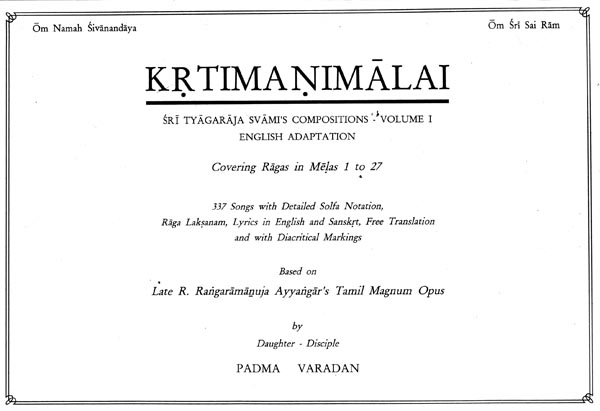
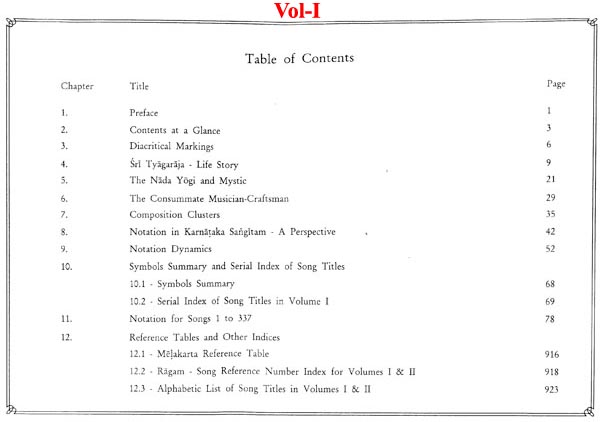
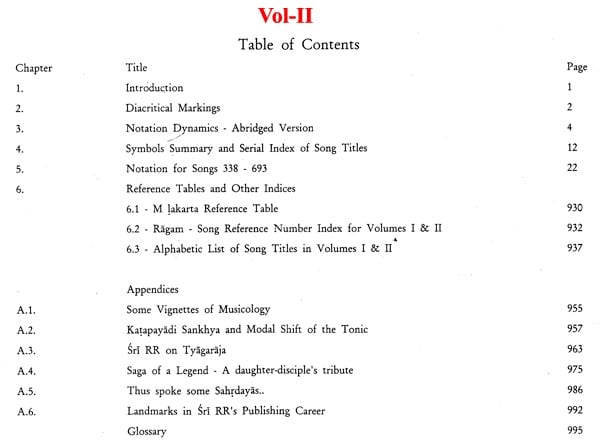
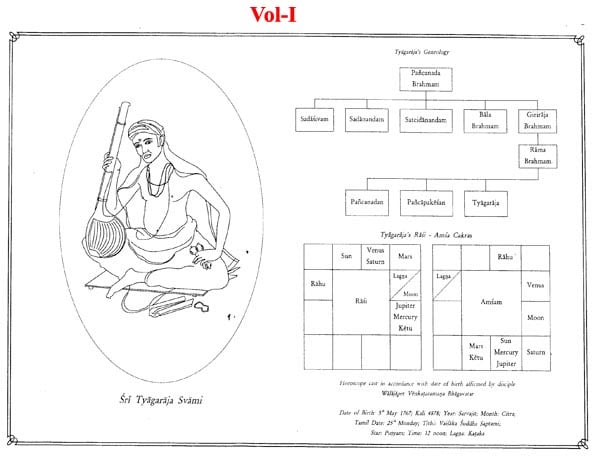
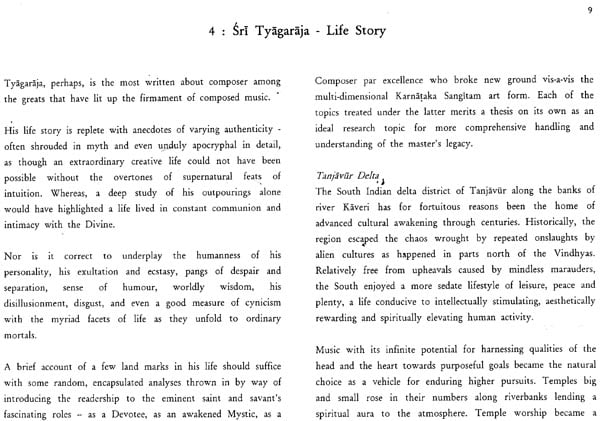
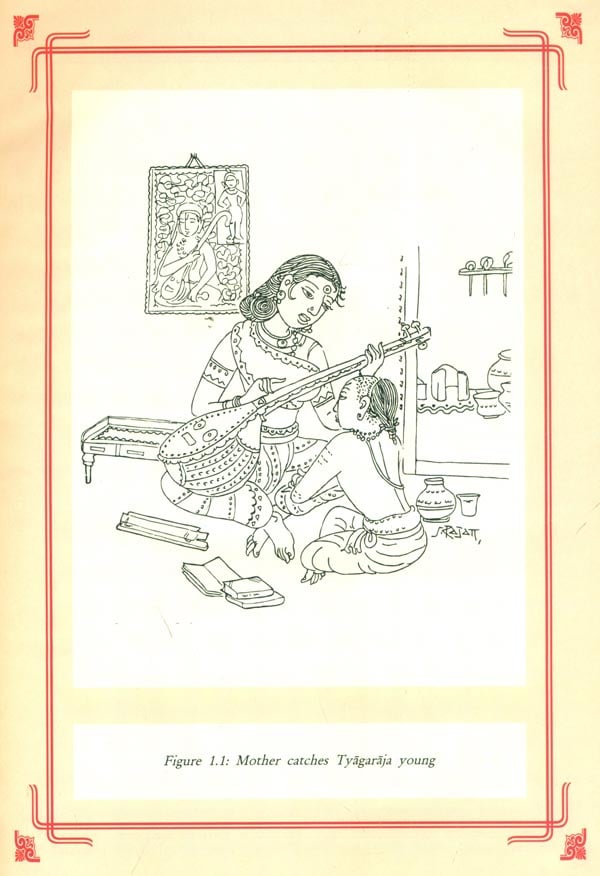
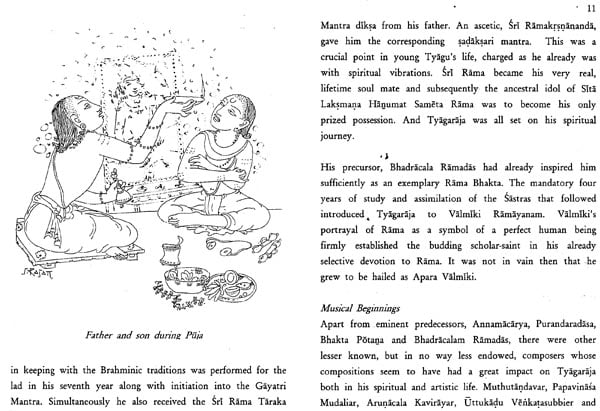

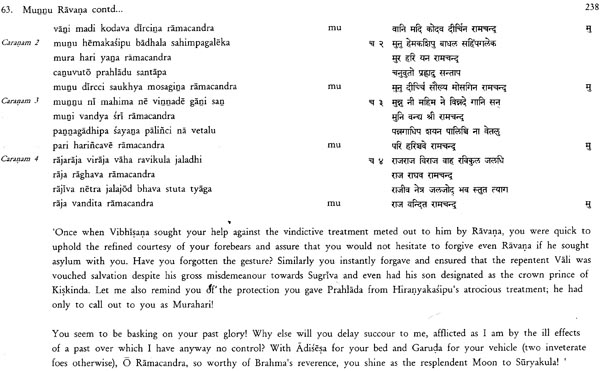
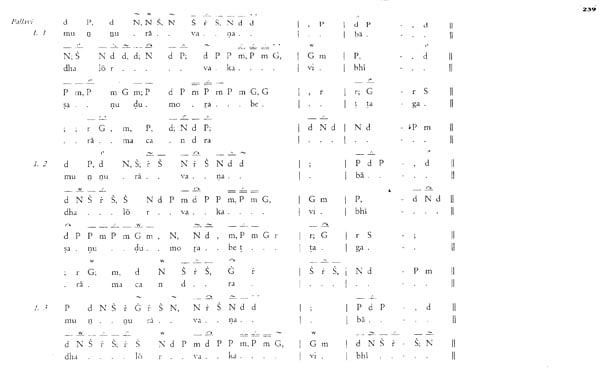

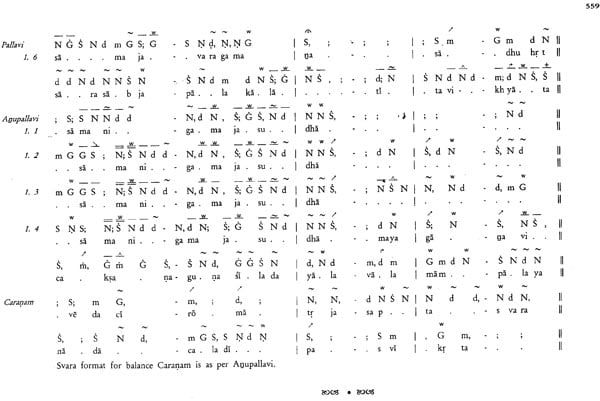
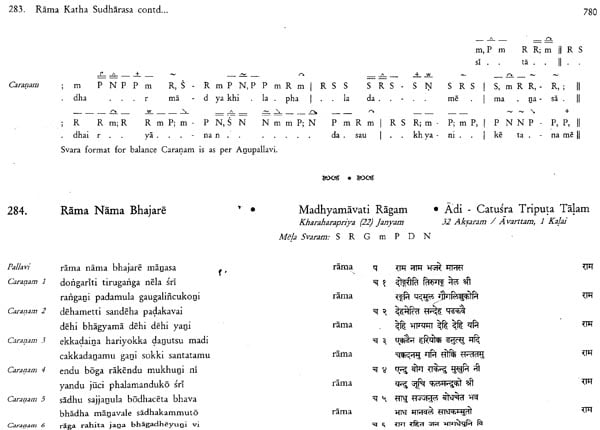
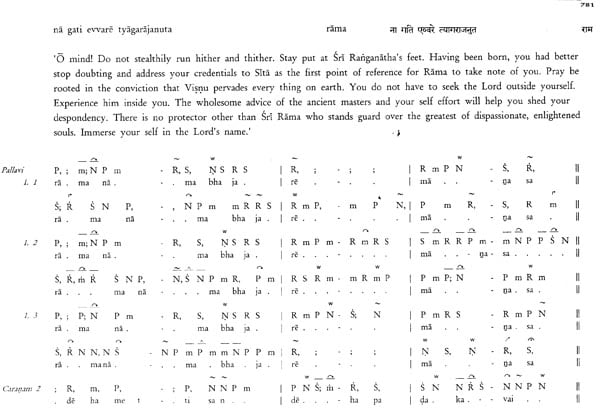
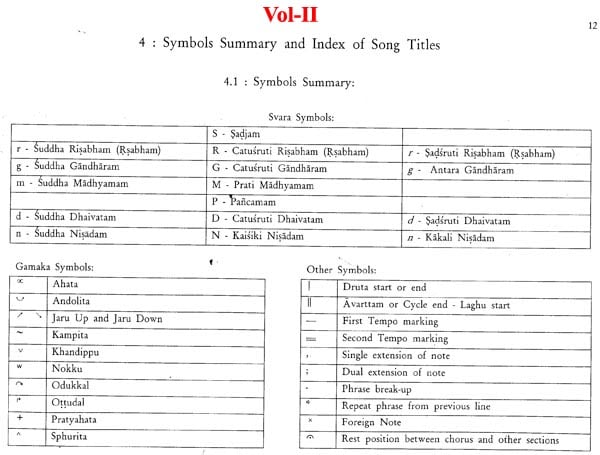
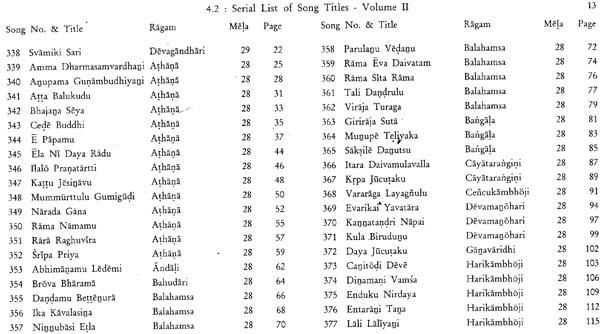



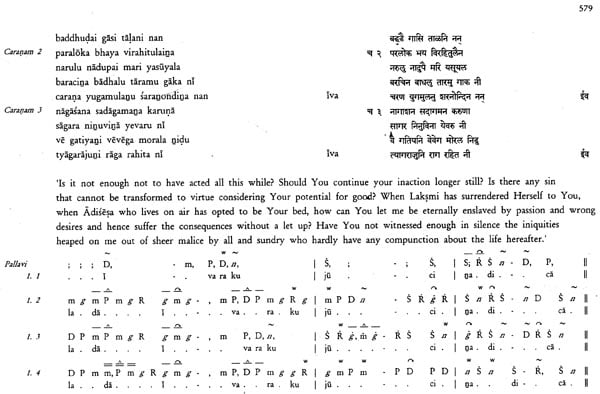
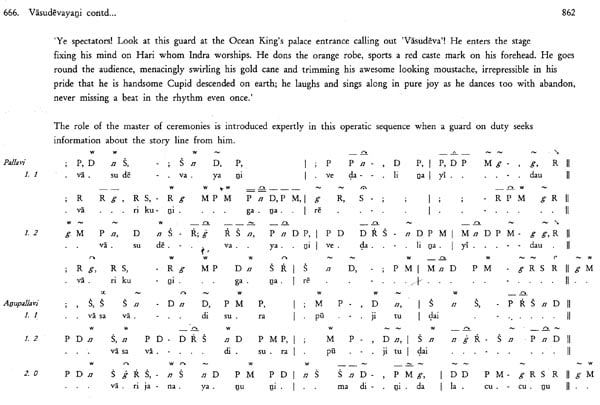
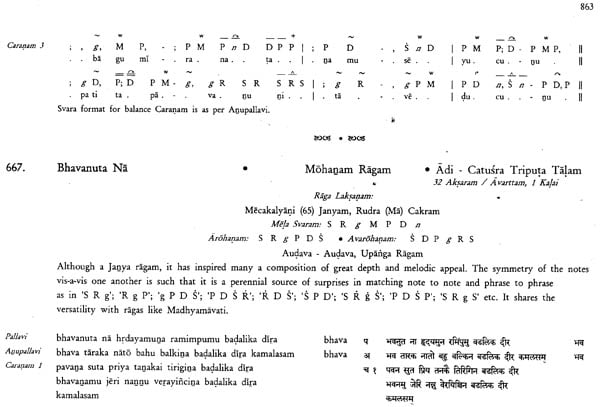
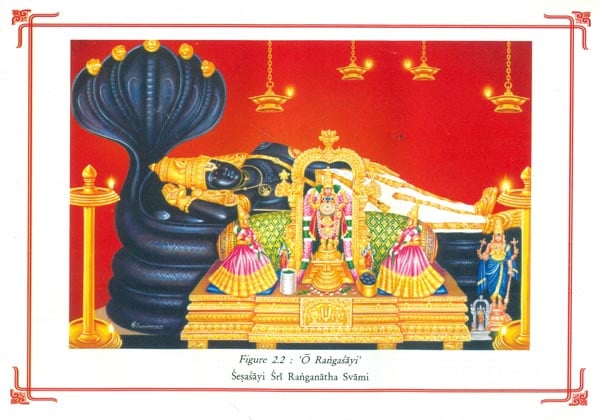
Send as free online greeting card
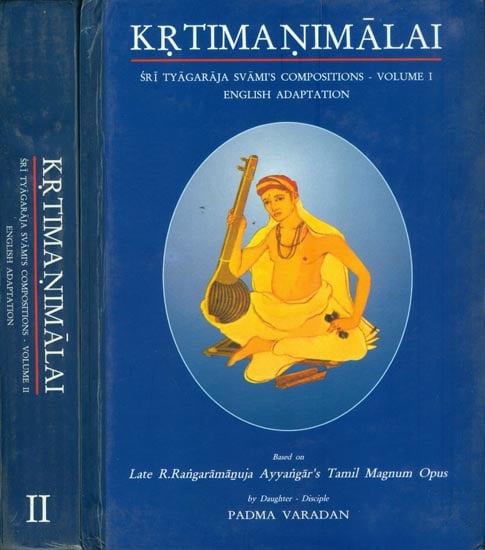
Visual Search